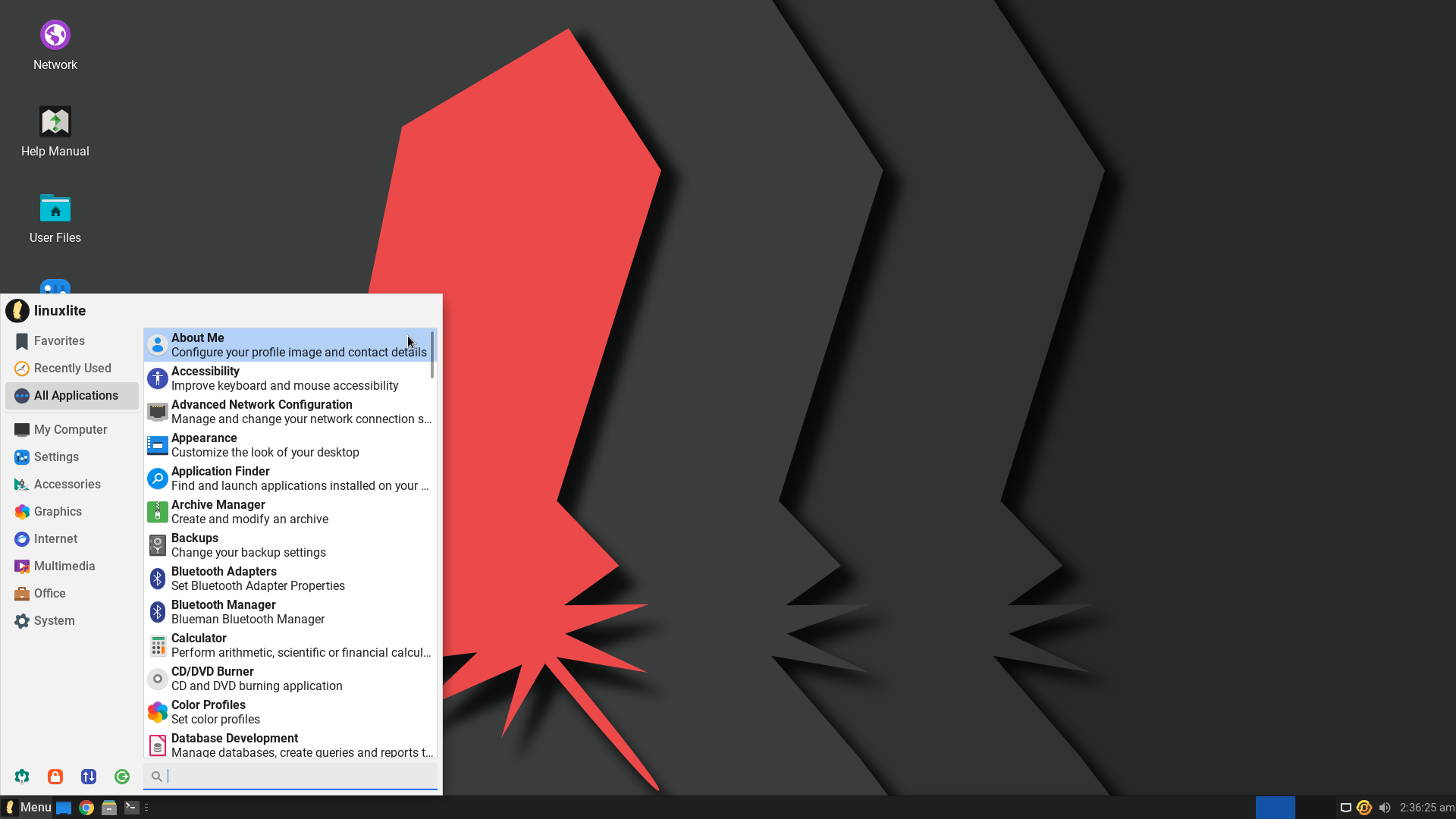When using Linux, you might want to run scripts when your system starts up in order to automate tasks and customize your environment. There are a few ways to make a script run when Linux boots. One option is to use systemd, which is the init system for many Linux distros. Another choice is to use cron jobs with the @reboot option. You can also add your script to startup files like /etc/rc.local.
The method you pick depends on your needs and Linux setup. Systemd works well for complex startup tasks. Cron is good for simple scripts that need to run at boot. Adding to startup files can work too, but it’s not as flexible as other options. Understanding these methods and their best practices empowers you to harness the full potential of startup scripts and tailor your Linux environment to your preferences, which can significantly enhance your Linux experience.
Automating Your Linux Experience: Running Scripts at Startup
Understanding Startup Scripts
Startup scripts, in essence, are executable files that run automatically when your Linux system boots up. This automation proves handy for various tasks, like launching background services, configuring network settings, or even personalizing your desktop environment.
Methods to Achieve Startup Script Execution
Linux offers several methods to achieve script execution at startup. Each method has its own advantages and use cases. Let’s explore some common ones:
1. Systemd Service Units:
For system-wide scripts and services, Systemd service units are the go-to solution.
- Create a service file: Draft a
.servicefile in/etc/systemd/system/describing your script’s behavior. - Enable and start the service: Use
systemctl enableandsystemctl startcommands to activate your service.
2. Cron Jobs:
Cron jobs are suitable for scheduled tasks, including those at startup.
- Edit crontab: Use
crontab -eto open your crontab file. - Add a startup entry: Insert a line like
@reboot /path/to/your/script.shto run your script at boot.
3. User-Specific Startup:
For scripts specific to your user account, consider these options:
- .bashrc or .bash_profile: Add your script execution command to these files to run it upon login.
- Startup Applications: Many desktop environments provide a graphical interface to manage startup applications.
Crucial Considerations
- Permissions: Ensure your script has execute permissions (
chmod +x your_script.sh). - Error Handling: Implement error handling within your script to prevent startup issues.
- Logging: Consider adding logging to your script for troubleshooting and tracking.
Example: Systemd Service Unit
[Unit]
Description=My Startup Script
[Service]
Type=simple
ExecStart=/path/to/your/script.sh
[Install]
WantedBy=multi-user.target| Method | Advantages | Use Cases |
|---|---|---|
| Systemd Service Units | Robust, system-wide control | Background services, network configuration |
| Cron Jobs | Simple, scheduled execution | Periodic tasks at startup |
| .bashrc/.bash_profile | User-specific, runs on login | Desktop customization, personal scripts |
| Startup Applications (GUI) | Easy configuration | User-friendly, desktop-specific scripts |
Understanding the Linux Startup Process
The Linux startup process involves a series of steps that bring a system from power-on to a fully functional state. It includes booting the kernel and starting essential services.
Boot Sequence and Runlevels
The Linux boot sequence starts when you turn on your computer. The BIOS or UEFI checks the hardware. Then it loads the bootloader. The bootloader starts the Linux kernel.
After loading the kernel, the system enters a runlevel. Runlevels are different operating states. They control which services start. There are usually 7 runlevels (0-6). Each has a specific purpose:
- 0: Shutdown
- 1: Single-user mode
- 2-5: Multi-user modes
- 6: Reboot
Most systems use runlevel 5 for normal operation with a graphical interface.
Init Systems: Systemd, Init.d, and Upstart
Init systems manage the startup process after the kernel loads. They start and stop services. The three main init systems are:
Systemd: This is the newest and most common. It starts services in parallel. This makes boot times faster.
Init.d: An older system that uses shell scripts. It starts services one by one.
Upstart: A newer system than Init.d but older than Systemd. It’s event-based.
Systemd uses unit files to define services. Init.d uses shell scripts. To run a script at startup, you need to work with your init system.
Execution Mechanisms for Startup Scripts
Linux offers many ways to run scripts when the system starts up. These methods let users set up programs or tasks to start right away when the computer turns on.
Cron Jobs and the @Reboot Expression
Cron is a tool that runs tasks at set times. It can also run scripts when the system boots. To use cron for startup scripts, you add a line to the crontab file. This line starts with @reboot followed by the script’s path.
Here’s how to set up a cron job to run at startup:
- Open the crontab file:
crontab -e - Add this line:
@reboot /path/to/your/script.sh - Save and exit the file
The @reboot command tells cron to run the script once when the system starts up. This method works well for simple tasks that don’t need to run as system services.
Systemd Service Files
Systemd is now the main startup system for many Linux systems. It uses service files to manage programs that run at boot time. To set up a startup script with systemd:
- Make a new file in /etc/systemd/system/ with a .service ending
- Add these lines to the file:
[Unit]
Description=My Startup Script
[Service]
ExecStart=/path/to/your/script.sh
[Install]
WantedBy=multi-user.target
- Run
sudo systemctl enable your-service-name.service
This tells systemd to run your script when the system boots. Systemd offers more control over when and how scripts run compared to other methods.
The rc.local and /etc/rc.d/rc.local Files
The rc.local file is an old way to run startup scripts. Some new Linux systems don’t use it anymore. But if your system has it, you can add scripts to /etc/rc.local or /etc/rc.d/rc.local.
To use rc.local:
- Open the file with a text editor
- Add your script’s full path before the
exit 0line - Make sure the file can be run:
sudo chmod +x /etc/rc.local
This method is simple but might not work on all Linux systems. It’s best to check if your system supports rc.local before using it.
Custom Scripts in Init.d Directory
The init.d directory holds startup and shutdown scripts for services. To add a custom script:
- Make a new script in /etc/init.d/
- Give it run rights:
sudo chmod +x /etc/init.d/your-script - Set it to start at boot:
sudo update-rc.d your-script defaults
Scripts in init.d should follow a specific format. They need start and stop functions. This method works on many Linux systems but is less common now with systemd in use.
Writing and Configuring a Linux Startup Script
Setting up a Linux startup script needs careful planning and setup. The right steps make sure your script runs when the system boots up.
Setting Up a Basic Bash Script
A Bash script is a text file with commands that run in order. To make a startup script:
- Open a text editor
- Add this first line: #!/bin/bash
- Write your commands below
- Save the file with a .sh ending
Here’s a simple example:
#!/bin/bash
echo "Hello, system startup complete!"
date >> /home/user/startup_log.txt
This script prints a message and adds the date to a log file.
Defining Permissions and Ownership
Your script needs the right permissions to run. The root user often owns startup scripts. To set this up:
- Change the owner: sudo chown root myscript.sh
- Give execute permission: sudo chmod +x myscript.sh
These commands make root the owner and let the script run. Be careful with root access. Only use it when needed for system tasks.
Setting Up Systemd Service Unit Files
Systemd is a common way to manage services on Linux. To run your script at startup:
- Make a new file: sudo nano /etc/systemd/system/myscript.service
- Add this content:
[Unit]
Description=My Startup Script
[Service]
ExecStart=/path/to/myscript.sh
[Install]
WantedBy=multi-user.target
- Save and close the file
- Enable the service: sudo systemctl enable myscript.service
This setup tells systemd to run your script when the system starts. The ExecStart line points to your script’s location.
Automation with Cron: Scheduling Tasks
Cron lets you run scripts and tasks on a set schedule. It’s a powerful tool for automating repetitive jobs on Linux systems.
Creating and Editing Crontab Files
Crontab files store the schedules for cron jobs. Each user can have their own crontab file. To edit your crontab file, use this command:
crontab -e
This opens the file in your default text editor. Add one line for each task you want to schedule. The basic format is:
* * * * * command_to_run
The five stars represent:
- Minute (0-59)
- Hour (0-23)
- Day of month (1-31)
- Month (1-12)
- Day of week (0-7, where 0 and 7 are Sunday)
For example, to run a backup script every day at 2:30 AM:
30 2 * * * /path/to/backup-script.sh
Save the file when you’re done editing. The cron daemon will automatically pick up the changes.
Managing Scheduled Tasks with Crontab
To view your current cron jobs, use:
crontab -l
This displays all scheduled tasks in your crontab file.
To remove all your cron jobs:
crontab -r
Be careful with this command. It deletes your entire crontab file.
You can also edit the system-wide crontab file:
sudo crontab -e
This is useful for tasks that need to run as root or affect the whole system.
Using Special Strings Like @Reboot for Scheduling
Cron offers special strings to make scheduling easier. The @reboot string is very useful. It runs a command once at startup.
To use @reboot, add a line like this to your crontab:
@reboot /path/to/startup-script.sh
Other special strings include:
- @daily (run once a day)
- @weekly (run once a week)
- @monthly (run once a month)
- @yearly (run once a year)
These strings save you from having to remember the exact cron syntax for common schedules.
Advanced Systemd Configuration
Systemd offers powerful tools to manage scripts at startup. It lets you control when and how your programs run. You can set up complex rules for starting services in the right order.
Creating and Enabling Service Units
To run a script at startup, you need to make a service unit file. This file tells systemd how to start your program. Put the file in /etc/systemd/system with a .service extension.
Here’s a basic service unit file:
[Unit]
Description=My Startup Script
[Service]
ExecStart=/path/to/your/script.sh
Type=simple
[Install]
WantedBy=multi-user.target
After making the file, run these commands:
- systemctl daemon-reload
- systemctl enable your-service.service
- systemctl start your-service.service
These steps load the new service, set it to start at boot, and start it now.
Managing Service Dependencies and Order
You can control the order services start in. This helps if one service needs another to run first. Add these lines to your service file:
[Unit]
After=network.target
Requires=mysql.service
This makes your service start after the network is up and MySQL is running. You can list multiple services in each line.
You can also use Before= to make your service start before others. This gives you fine control over the startup process.
Targeting Specific System States with WantedBy
The WantedBy option in the [Install] section sets when your service starts. Common targets are:
- multi-user.target: Normal system startup
- graphical.target: When the GUI loads
- network-online.target: After network is fully up
You can list more than one target:
[Install]
WantedBy=multi-user.target graphical.target
This starts your service in both text and GUI modes. Pick the right targets to make sure your script runs when needed.
Startup Scripts on Different Desktop Environments
Linux desktop environments offer ways to run scripts when a user logs in. This lets you set up your workspace or start programs automatically.
Autostart Scripts in GNOME and KDE
GNOME and KDE make it easy to run scripts at startup. In GNOME, you can add scripts to the “Startup Applications” tool. KDE has a similar feature called “Autostart.”
To set up a script in GNOME:
- Open “Startup Applications”
- Click “Add”
- Enter a name and the path to your script
- Click “Add” to save
For KDE:
- Go to “System Settings”
- Find “Startup and Shutdown”
- Click “Autostart”
- Add your script here
Both systems will run these scripts when you log in. This works well for most tasks you want to do at startup.
Environment-Specific Scripts Execution on Login
Different desktop environments use different files to run scripts at login. This lets you set up scripts that only run in certain environments.
For GNOME, you can put scripts in ~/.config/autostart. Create a .desktop file here with your script info. KDE also reads from this folder.
Bash login scripts like .bashrc and .bash_profile work in many environments. These run when you open a terminal or log in to a text-only session.
To use these:
- Open .bashrc or .bash_profile in a text editor
- Add your script or commands at the end
- Save the file
This method works well for setting up your shell environment across different desktops.
Troubleshooting Startup Script Issues
Startup script problems can stem from various causes. Fixing these issues often involves checking permissions, reviewing script content, and managing system services.
Identifying and Resolving Permission Problems
Permission issues are a common cause of startup script failures. Scripts need the right permissions to run. Check if the script has execute permissions. Use this command:
ls -l /path/to/your/script
If needed, add execute permissions:
chmod +x /path/to/your/script
Make sure the script owner and group are correct. Change them if needed:
chown user:group /path/to/your/script
Dealing with Execution Failures and Script Errors
Script errors can prevent startup. Check the script for syntax errors. Run it manually to spot issues:
bash -x /path/to/your/script
This shows each command as it runs. Look for error messages.
Check if all programs the script uses are installed. Update file paths if needed. Make sure the script uses the right shebang line:
#!/bin/bash
Service and Daemon Management Challenges
Systemd is used to manage services on many Linux systems. If your startup script is a service, check its status:
systemctl status your-service-name
If the service fails, look at its logs:
journalctl -u your-service-name
Reload the system manager after changes:
systemctl daemon-reload
Restart the service:
systemctl restart your-service-name
Logging and System Monitoring
Logs help find startup script issues. Add logging to your script:
echo "$(date): Script started" >> /var/log/myscript.log
Check system logs for errors:
tail -f /var/log/syslog
Use tools like ‘top’ or ‘htop’ to watch system resources during startup. High CPU or memory use might point to script problems.
Set up alerts for script failures. This helps catch issues early.
Best Practices for Startup Scripts
Creating good startup scripts helps systems run smoothly. Here are key tips to make scripts work well and stay useful over time.
Script Optimization and Management
Keep startup scripts short and fast. Long or slow scripts can delay system boot. Use simple commands when possible. Avoid complex logic in startup scripts.
Put each task in its own script. This makes debugging easier. It also lets you turn tasks on or off as needed.
Test scripts thoroughly before adding them to startup. Make sure they work in different situations. Check that they don’t cause errors or slow down the system.
Run scripts in the background when possible. This lets the system continue booting while the script works.
Use error handling in scripts. This helps catch and fix problems. It also prevents scripts from hanging if something goes wrong.
Ensuring Compatibility and Forward-Compatibility
Write scripts to work on different Linux versions. Use basic shell commands that work everywhere. Avoid version-specific features when possible.
Check for needed tools before using them. Install missing tools if needed. This helps scripts work on more systems.
Use full paths to commands and files. This prevents issues if system paths change. It also makes scripts more portable between systems.
Keep scripts updated as the system changes. Remove old parts that aren’t needed anymore. Add new features as the system grows.
Test scripts after system updates. Make sure they still work as expected. Fix any new issues that come up.
Maintaining Documentation and Comments
Add clear comments to scripts. Explain what each part does. This helps others understand and update the script later.
Write a short description at the start of each script. Include what it does and when it should run. Add any special setup steps needed.
Keep a list of all startup scripts. Note where each one is and what it does. Update this list when adding or removing scripts.
Document any dependencies scripts have. List required tools or files. This makes troubleshooting easier.
Add version numbers to scripts. Update them when making changes. This helps track script history over time.
Use Cases for Startup Scripts in Different Linux Scenarios
Startup scripts in Linux help users run tasks when their system boots up. These scripts can do many useful things for both servers and personal computers.
Server Automation and Service Management
Startup scripts are key for managing servers. They can start important services like web servers or databases when the system turns on. This ensures services are always ready.
System admins use these scripts to set up firewalls and security rules. They can also use them to check and mount disk drives.
For cloud servers, startup scripts help set up the system. They can install needed software and set the right settings. This makes it easy to create new servers quickly.
Task Automation for Desktop Users
Desktop Linux users can use startup scripts too. These scripts can open apps they use every day when they log in.
Users can set their favorite wallpaper or theme with a script. The script can also adjust system settings like screen brightness or volume.
Sync tools for files or backups can start up right away. This keeps data safe and up-to-date without the user having to think about it.
Scripts for Network and System Monitoring
Network monitoring tools often use startup scripts. These scripts can start programs that watch network traffic or check if servers are working.
System health checks can run at boot time. They can look at disk space, CPU use, and memory. If there are problems, the scripts can send alerts.
Log collection tools can start up to gather info about the system. This helps with troubleshooting and security checks.
Startup Jobs for Application Lifecycle Management
Developers use startup scripts to manage their apps. These scripts can start test environments when a dev machine boots up.
For apps in production, scripts ensure all parts of the app start in the right order. This is key for complex systems with many pieces.
Scripts can also check for updates and install them if needed. This keeps systems current and secure without manual work.
Database cleanup or maintenance can happen at startup. This keeps apps running smoothly without slowing things down during busy times.
Frequently Asked Questions
Setting up scripts to run at startup in Linux involves several methods. These vary based on the specific Linux distribution and the level of system access required.
How can I configure a script to run at boot time in Ubuntu Linux?
Ubuntu uses systemd for managing startup processes. To run a script at boot:
- Create a service file in /etc/systemd/system/
- Define the script path and execution details
- Enable the service using systemctl
This method works for scripts that need to run as soon as the system boots.
What is the method for setting up a startup script using the command line in Linux?
The command line offers a quick way to set up startup scripts in Linux:
- Write the script and make it executable
- Add the script to /etc/rc.local
- Ensure /etc/rc.local is executable
This approach works well for simple scripts that don’t need special permissions.
Where can I find and manage scripts that are executed on Linux startup?
Linux startup scripts are typically found in specific directories:
- /etc/init.d/
- /etc/rc.d/
- /etc/systemd/system/
System administrators can manage these scripts using tools like systemctl or update-rc.d.
What are the steps to run a custom shell script at system startup in Ubuntu?
To run a custom shell script at startup in Ubuntu:
- Create the script and save it in a suitable location
- Make the script executable
- Add the script to /etc/rc.local or create a systemd service file
- Test the script to ensure it works as expected
This process allows for custom tasks to be performed each time the system starts.
How do I ensure a script runs on startup with root privileges in a Linux system?
To run a script with root privileges at startup:
- Create a systemd service file
- Set the User directive to root in the service file
- Place the script in a secure location like /usr/local/bin/
- Enable and start the service using systemctl
This method ensures the script runs with the needed permissions while maintaining system security.
What mechanisms are available in Linux to automatically start a program at boot?
Linux offers several ways to start programs at boot:
- systemd services
- cron jobs with @reboot
- rc.local file
- init scripts (for older systems)
- user’s startup applications (for desktop environments)
Each method has its own use case and level of complexity.






